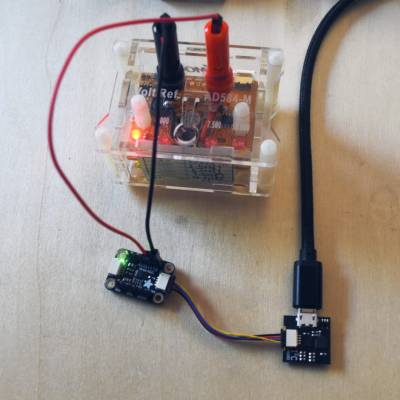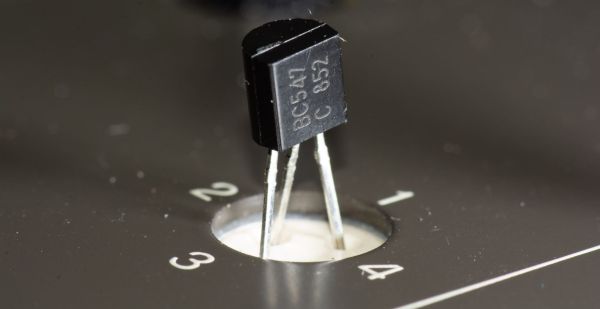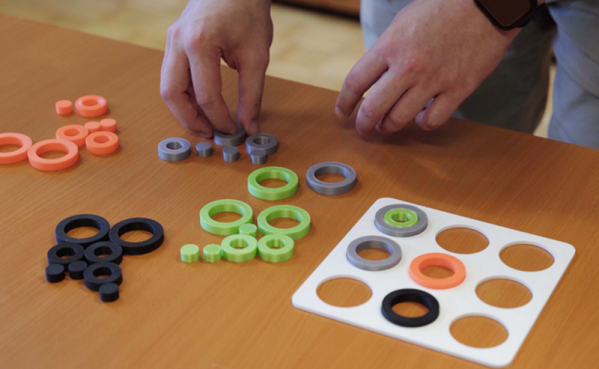Finely powdered aluminium can make almost anything more pyrotechnically interesting, from fireworks to machine shop cleanups – even ceramics, as [Degree of Freedom] discovered. He was experimenting with mixing aluminium powder with various other substances to see whether they could make a thermite-like combination, and found that he could shape a paste of aluminium powder and clay into a form, dry it, and ignite it. After burning, it left behind a hard ceramic material.
[Degree of Freedom] was naturally interested in the possibilities of self-firing clay, so he ran a series of experiments to optimize the composition, and found that a mixture of three parts of aluminium to five parts clay by volume worked best. However, he noticed that bubbles of hydrogen were forming under the surface of the clay, which could cause cracks during the firing. The aluminium was reacting with water to form the bubbles, somewhat like a unwanted form of aerated concrete, and for some reason the kaolinite in clay seemed to accelerate the reaction. Trying to passivate the aluminium by heating it in air or water didn’t prevent the reaction, but [Degree of Freedom] did find that clay extracted from the dirt in his back yard didn’t accelerate it as kaolinite did, and the mixture could dry out without forming bubbles.
This mixture wasn’t totally reliable, so to make it a bit more consistent [Degree of Freedom] added some iron oxide to accelerate the burn through an actual thermite reaction – some mixtures burned hot enough to start to melt the clay. After many tests, he found that sixteen parts clay, seven parts aluminium, and five parts iron oxide gave the best results. He fired two cups made of the mixture, a thin rod, and a cube, with mixed results. The clay expanded a bit during firing, which sometimes produced a rough finish, cracking, and fragility, but in some cases it was surprisingly strong.
The actual chemistry at work in the clay-aluminium mixtures is a bit obscure, but not all thermite reactions need to involve iron oxide, so there might have been some thermite component even in the earlier mixtures. If you need heat rather than ceramic, we’ve also seen a moldable thermite paste extruded from a 3D printer.
Relay Computer Knows The Sequence
When we first saw [DiPDoT’s] homebrew computer, we thought it was an Altair 8800. But, no. While it has a very familiar front panel, the working parts are all based on relays. While it isn’t finished, the machine can already do some simple calculations as you can see in the video below.
Turns out, the Altair front panel isn’t a coincidence. He wants to put the device in an Altair-style case. This limits him to two backplane cards, but he’s running out of space, so part of what he does in the video is redesign the backplanes.
We need to watch some more of these videos to figure out how he’s making his logic gates. A common approach is to wire AND gates as series relays and OR gates as parallel relays. However, there are some advantages to using relays as two-to-one multiplexers, which can create any logic gate you want.
If you just want to see the computer run, you can watch it generate a Fibonacci sequence around the 14:30 mark. Glorious sound from a beautiful bunch of relays. Not exactly a speed demon, mind you, but not half bad for a bunch of electromechanical relays.
There was a time when computers like this were state-of-the-art. In a way, we miss those days. But then again, in some ways, we don’t.
Get Ready For Supercon
It’s just about all we can think about over here: the week leading up to the 2025 Superconference. From what we hear, it’s all-hands-on over in Pasadena right now, as everyone is putting the finishing touches on preparations for Hackaday’s annual US gathering.
We’ve been heads-down in the badge for a little while, and between that and all of the logistics, it’s easy to get lost in the work. And then we saw this video that [InstantArcade] shot, just casually walking through the event a couple years back. It’s not particularly a highlights reel, but seeing so many of the people I recognized, and remembering the many fantastic conversations we’d had. So much energy, interest, and simple excitement in sharing stories, what they’re working on, or just what they’ve seen lately that blew their mind.
There is no substitute for being there in person, but that doesn’t mean we’re not going to try! We’ll be putting the talks up on our YouTube channel next Saturday, and as always, you’re invited to join in the discussion on our Discord server both during the event and whenever. If you’re not going to be there in the alley, join us virtually!
We’ll be meeting up Thursday night at 7:00 pm at King’s Row for an informal pre-meetup. Bring a hack if you’ve got something to share! Then things start for real on Friday morning over at Supplyframe HQ. We’ll talk badges, get to know each other, and just nerd out and chill. (I love Fridays!) Halloween / sci-fi costume party Friday night, get some sleep, and head on over to the LACM and Design Lab for two tracks of talks and a full day on Saturday going late into the night. And as usual, the change back to standard time gets you an extra hour of sleep so that you’re rested and ready for Sunday.
There is still a lot to do behind the scenes, but seeing you all there makes it more than worth it! See you at Supercon.
(Oh, and no newsletter next week, but you can spend all day Saturday and Sunday watching the talks. That makes up for it, right?)
Identifying Fake Small-Signal Transistors
It’s rather amazing how many electronic components you can buy right now are not quite the genuine parts that they are sold as. Outside of dedicated platforms like Mouser, Digikey and LCSC you pretty much enter a Wild West of unverifiable claims and questionable authenticity. When it comes to sites like eBay and AliExpress, [hjf] would go so far as to state that any of the power transistors available for sale on these sites are 100% fake. But even small-signal transistors are subject to fakes, as proven in a comparison.
Found within the comparison are a Mouser-sourced BC546C, as well as a BC547C, SN3904 and PN2222A. These latter three all sourced from ‘auction sites’. As a base level test all transistors are put in a generic component tester, which identifies all of them correctly as NPN transistors, but the ‘BC547C’ and ‘PN2222A’ fail the test for having a much too low hFE. According to the generic tester at least, but it’s one red flag, along with the pin-out for the ‘BC547C’ showing up as being inverted from the genuine part.
Next is a pass through the HP4145B curve tracer, which confirms the fake BC547C findings, including the abysmal hFE. For the PN2222A the hFE is within spec according to the curve tracer, defying the component tester’s failing grade.
What these results make clear is that these cheap component testers are not a realistic ‘fake’ tester. It also shows that some of the fake transistors you find on $auction_site are clearly fake, while others are much harder to pin down. The PN2222A and 2N3904 used here almost pass the sniff test, but have that distinct off-genuine feeling, while the fake BC547C didn’t even bother to get its pinout right.
As always, caveat emptor. These cheapo transistors can be a nice source for some tinkering, just be aware of possibly wasting hours debugging an issue caused by an off-nominal parameter in a fake part.
Teaching Math With 3D Printers
We’ve often thought that 3D printers make excellent school projects. No matter what a student’s interests are: art, software, electronics, robotics, chemistry, or physics, there’s something for everyone. A recent blog post from [Prusa Research] shows how Johannes Kepler University is using 3D printing to teach math. You can see a video with Professor [Zsolt Lavicza] explaining their vision below.
Instead of relying on abstract 3D shapes projected on a 2D screen, GeoGebra, educational math software, creates shapes that you can produce on a 3D printer. Students can physically handle and observe these shapes in the real world instead of on a flat screen.
One example of how the 3D printer finds use in a math class is producing “Genius Square,” a multilevel tic-tac-toe game. You can find the model for that and other designs used in the classes, on Printables. Some prints are like puzzles where students assemble shapes from pieces.
Putting 3D printers in school isn’t a new idea, of course. However, machines have become much simpler to use in recent years, so maybe the time is now. If you can’t find money for printers in school, you can always teach robotics using some low-tech methods.
Avoid Missed Connections With The Connectorbook’s Web Tool
Connectors are wonderful and terrible things. Wonderful, in that splicing wires every time you need to disassemble something is really, really annoying. Terrible in that it can be just such an incredible pain-in-the-assets to find the right one if you’re stuck with just a male or a female for some unfortunate reason. We’ve all been there, and all spent time growing increasingly frustrated poring over the DigiKey catalog (or its local equivalent) trying to figure out what the heck we were dealing with. That’s why [Davide Andrea]’s The Connectorbook exists–and even better, the free web service they call Identiconn.
The tool isn’t super new–the Wayback Machine has snapshots of it dating back to 2021–but it’s still very much worth highlighting. There’s a “quick pick” option that lets you narrow it down with photos, or if you want to get specific there are dozens of filters to try and help you find your exact part. You can filter based on everything from the pitch and geometry of the connectors, to how it terminates, attachments, latches, et cetera. While we can’t guarantee the database is fully exhaustive, it looks pretty darn big, and using it is going to be a lot less exhausting than pouring through catalogs hoping that particular vendor or manufacturer lists the matching part.
Some might argue that this database is not a hack, but it’s certainly going to enable a certain amount of hacking. That’s why we’re grateful to [Alex] for the tip! If you’ve got a know tool you think we all should know about that hasn’t been shared yet, please let us know.
The Great ADS1115 Pricing And Sourcing Mystery

Following up on the recent test of a set of purported ADS1115 ADCs sourced from Amazon [James Bowman] didn’t just test a genuine Ti part, but also dug into some of the questions that came up after the first article. As expected, the AdaFruit board featuring a presumed genuine Ti ADS1115 part performed very well, even performing significantly better on the tested parameters than the datasheet guarantees.
Thus we can confirm that when you get the genuine Ti part, you can expect very good and reliable performance for your ADC purposes. Which leaves the unaddressed questions about what these cheapo Amazon-sourced ADS1115 ICs are, and how it can be that LCSC has what should be the same parts for so much cheaper than US distributors?
As far as LCSC pricing is concerned, these are likely to be genuine parts, but also the subject of what is known as price discrimination. This involves pricing the same product differently depending on the targeted market segment, with e.g. Digikey customers assumed to be okay with paying more to get the brand name assurance and other assumed perks. Continue reading “The Great ADS1115 Pricing And Sourcing Mystery”

















